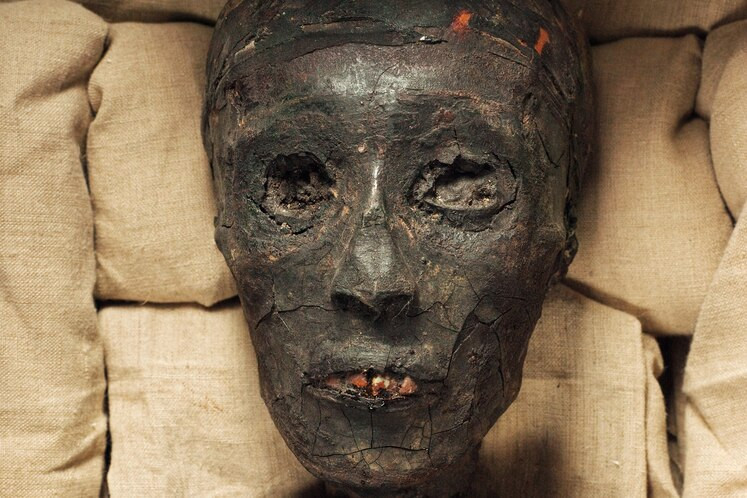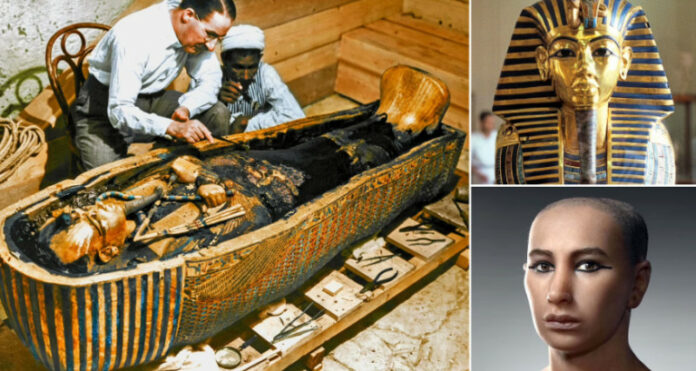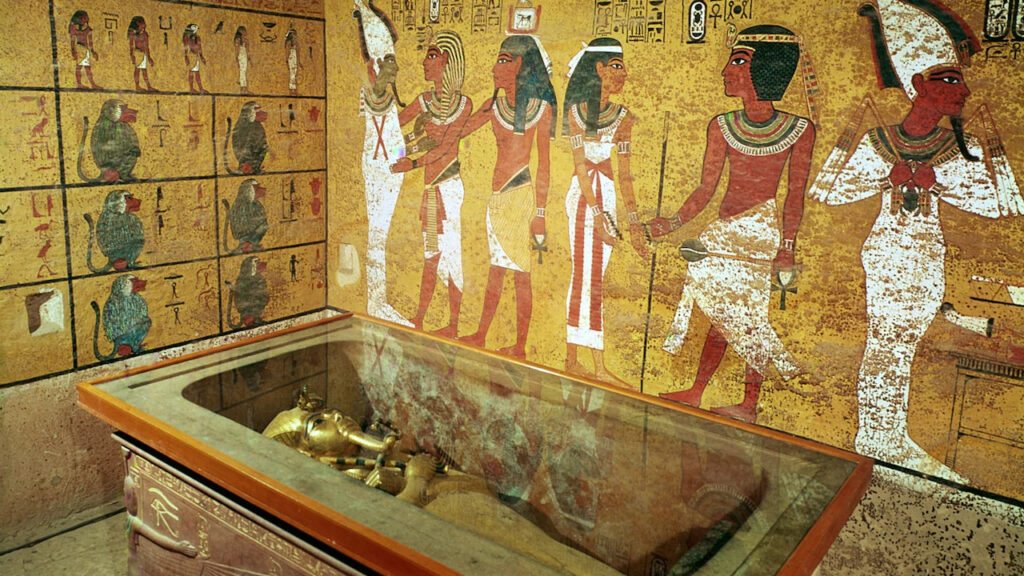In the hallowed halls of an ancient Egyptian temple, thick with the scent of burning incense, a young boy stands solemnly, waiting for the priest to lower a glittering crown onto his head. This sacred ceremony marks his ascension to the throne, transforming the nine-year-old into the pharaoh of Egypt. His people will come to know him by his royal name: King Tutankhamun, though history would immortalize him as King Tut.
The Enigmatic Death of King Tutankhamun Finally Unveiled After 3,000 Years
King Tutankhamun ascended to the throne in 1332 B.C., during a period of unrest and conflict between Egypt and the neighboring kingdom of Nubia. He became pharaoh at the tender age of nine and ruled for nearly a decade. His reign, though short-lived, unfolded in a time of immense political and cultural transition in ancient Egypt. Tragically, Tutankhamun passed away around the age of 18, leaving behind more questions than answers. For centuries, little was known about this youthful ruler until 1922, when British archaeologist Howard Carter made one of the most significant discoveries in archaeological history—the untouched tomb of King Tutankhamun in Egypt’s Valley of the Kings.

The Nested Coffins
Years of meticulous exploration culminated in Carter’s groundbreaking discovery of Tutankhamun’s tomb. Within this sepulcher of ancient opulence lay treasures beyond imagination. However, the most astonishing find awaited deep inside: a series of nested coffins. The first coffin revealed another within it, and inside that, a third coffin crafted entirely of gold. Finally, Carter uncovered the ultimate prize—Tutankhamun’s mummified remains, undisturbed for over 3,000 years. This incredible find offered the modern world an unprecedented glimpse into the grandeur and mystique of ancient Egyptian royalty.
Investigating the Mystery of Tutankhamun’s Death
The discovery of King Tut’s mummy, while monumental, came with its challenges. Shortly after its unearthing, attempts to remove the body from the coffin caused accidental damage to the mummy. The sticky, sacred oils that had been poured over Tutankhamun during his burial had solidified over the centuries, effectively binding his body to the coffin. Efforts to separate the two led to the mummy’s fragmentation, complicating any definitive determination of the cause of death.
Theories and Modern Analysis
Over the decades, speculation regarding King Tut’s untimely demise has run rampant. Early theories suggested foul play, with some positing that the young king had been poisoned. However, advances in technology have allowed modern scientists to delve deeper into this ancient mystery. Using tools like 3D imaging and CT scans, researchers have uncovered compelling evidence pointing to a different narrative. These scans revealed that King Tut suffered from various health issues, including a clubfoot and scoliosis, which may have hindered his mobility. Additionally, a fracture in his leg suggests he may have sustained a traumatic injury shortly before his death. Experts now theorize that Tutankhamun could have fallen from a chariot, and with a compromised immune system, he may have succumbed to an infection resulting from this injury.

The Continuing Mystery
Despite the wealth of evidence provided by modern analysis, the true circumstances surrounding King Tutankhamun’s death remain shrouded in mystery. The absence of detailed historical records from the time makes it challenging to piece together a definitive narrative. Archaeologists and historians alike continue to study the artifacts and remains, searching for clues that might shed light on the young king’s final days. However, the allure of King Tut’s story extends beyond his death. The treasures unearthed from his tomb, from the golden death mask to intricate jewelry and ornate furniture, have captivated audiences worldwide, ensuring that his legacy endures as the most famous mummy in history.
The Legacy of King Tutankhamun
King Tutankhamun’s tomb, with its stunning artifacts, has provided invaluable insights into the cultural, religious, and political dynamics of ancient Egypt. The discovery underscored the Egyptians’ meticulous burial practices and their belief in the afterlife, where a pharaoh’s possessions would accompany them for eternity. For modern archaeologists, the tomb serves as an extraordinary time capsule, offering a snapshot of a civilization at its zenith.
Moreover, King Tutankhamun’s story highlights the fragility of life, even for a ruler revered as a living god. His sudden death at such a young age marked the end of an era and left his dynasty vulnerable to change and upheaval. Yet, through Carter’s discovery, King Tut achieved a form of immortality, becoming an enduring symbol of ancient Egypt’s splendor.
In Popular Culture
King Tutankhamun’s fame transcends the academic world. Since the discovery of his tomb, his image and artifacts have inspired countless exhibitions, books, films, and documentaries. The iconic golden death mask, in particular, has become a universal emblem of ancient Egyptian civilization. These cultural depictions often romanticize his life and reign, sparking global fascination and elevating him to the status of a historical icon.
The Future of Research
Advances in technology continue to offer new opportunities for unraveling the mysteries of King Tutankhamun’s life and death. DNA analysis has provided insights into his lineage, confirming familial ties to other prominent figures in Egyptian history, such as Akhenaten, who is believed to have been his father. Ongoing studies aim to understand the genetic and environmental factors that may have influenced his health and contributed to his early demise.

The quest for knowledge about King Tutankhamun is far from over. Each new discovery adds another layer to his enigmatic story, ensuring that his legacy will continue to intrigue and inspire future generations. From the grandeur of his coronation to the tragic mystery of his death, King Tutankhamun remains one of history’s most captivating figures.





